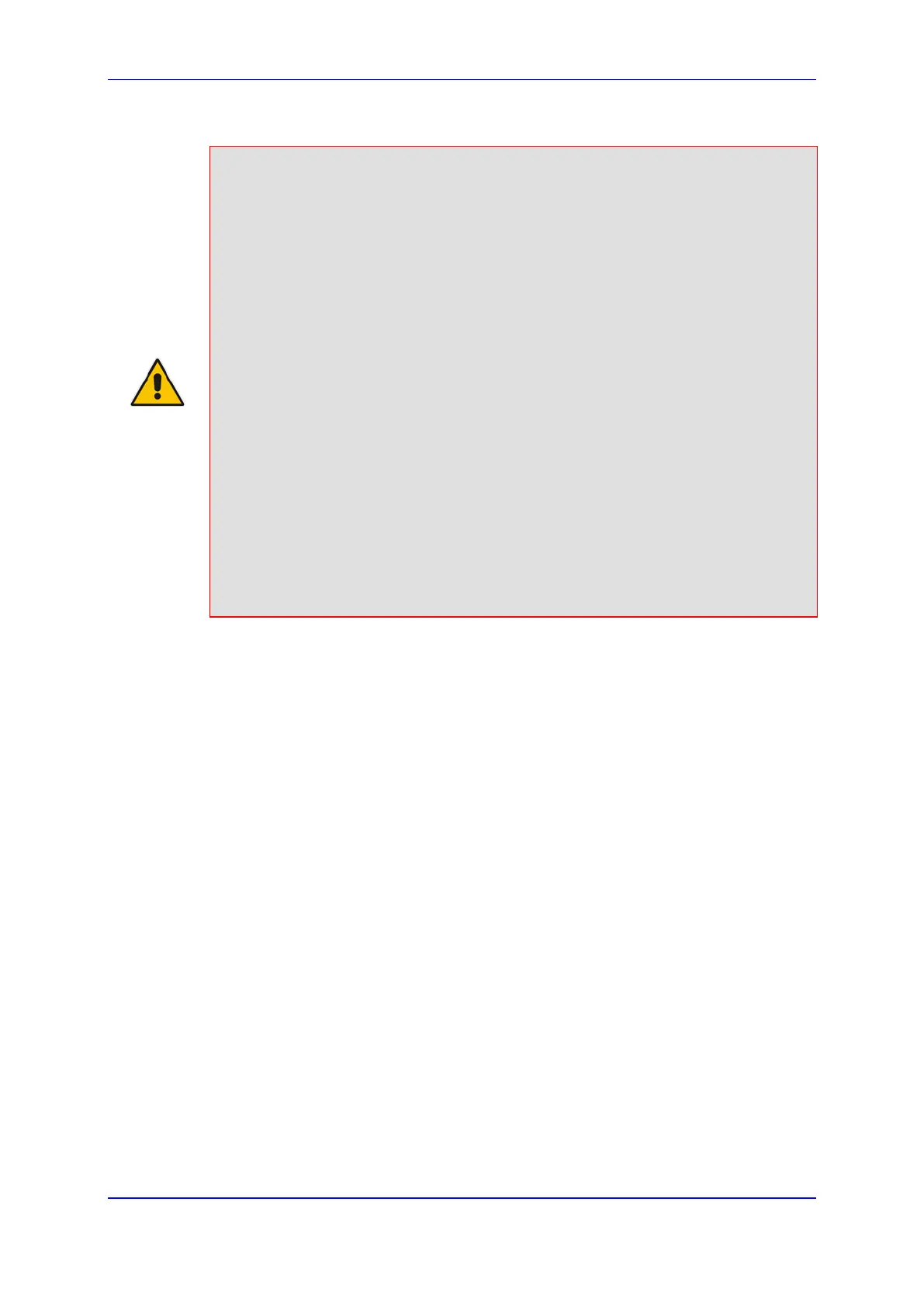Version 6.6 407 Mediant 2000
User's Manual 33. Software Upgrade
Notes:
• The Dial Plan file must not contain overlapping prefixes. Attempting to process an
overlapping configuration by the DConvert utility results in an error message
specifying the problematic line.
• The Dial Plan index can be selected globally for all calls (as described in the
previous procedure), or per specific calls using Tel Profiles.
• It may be useful to configure both Dial Plan file and Digit Maps. For example, the
Digit Map can be used for complex digit patterns (which are not supported by the
Dial Plan) and the Dial Plan can be used for long lists of relatively simple digit
patterns. In addition, as timeout between digits is not supported by the Dial Plan,
the Digit Map can be used to configure digit patterns that are shorter than those
defined in the Dial Plan or left at default (MaxDigits parameter). For example, the
“xx.T” digit map instructs the device to use the Dial Plan and if no matching digit
pattern is found, it waits for two more digits and then after a timeout
(TimeBetweenDigits parameter), it sends the collected digits. Therefore, this
ensures that calls are not rejected as a result of their digit pattern not been
completed in the Dial Plan.
• By default, if no matching digit pattern is found in both the Dial Plan and Digit Map,
the device rejects the call. However, if you set the DisableStrictDialPlan parameter
to 1, the device attempts to complete the call using the MaxDigits and
TimeBetweenDigits parameters. In such a setup, it collects the number of digits
configured by the MaxDigits parameters. If more digits are received, it ignores the
settings of this parameter and collects the digits until the inter-digit timeout
configured by the TimeBetweenDigits parameter is exceeded.
33.1.4.3 Dial Plan Prefix Tags for IP-to-Tel Routing
The device supports the use of string labels (or "tags") in the external Dial Plan file for
tagging incoming IP-to-Tel calls. The special “tag” is added as a prefix to the called party
number, and then the Inbound IP Routing Table uses this “tag” instead of the original
prefix. Manipulation is then performed after routing in the Manipulation table, which strips
the “tag” characters before sending the call to the endpoint.
This feature resolves the limitation of entries in the Inbound IP Routing Table (IP-to-Tel call
routing) for scenarios in which many different routing rules are required. For example, a city
may have many different area codes, some for local calls and others for long distance calls
(e.g. 425-202-xxxx for local calls, but 425-200-xxxx for long distance calls).
For using tags, the Dial Plan file is defined as follows:
Number of dial plan (text)
Dial string prefix (ranges can be defined in brackets)
User-defined routing tag (text)
The example configuration below assumes a scenario where multiple prefixes exist for
local and long distance calls:

